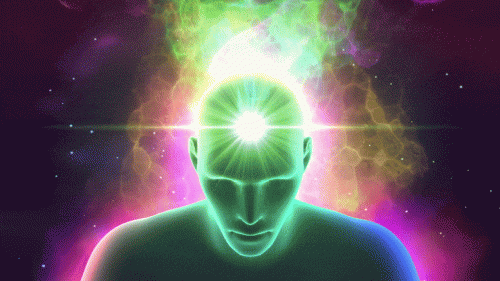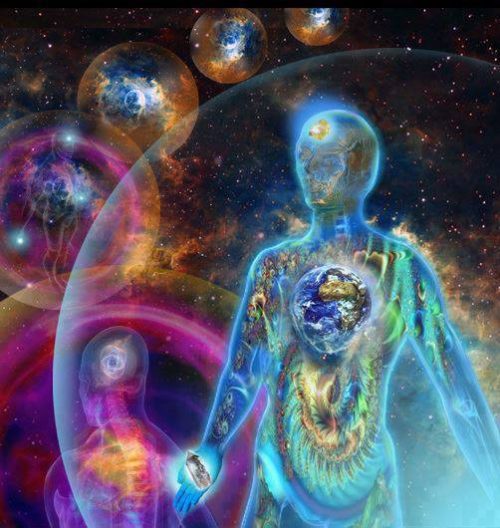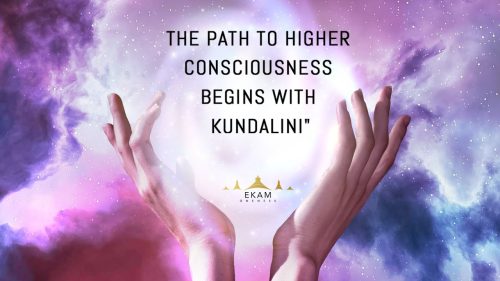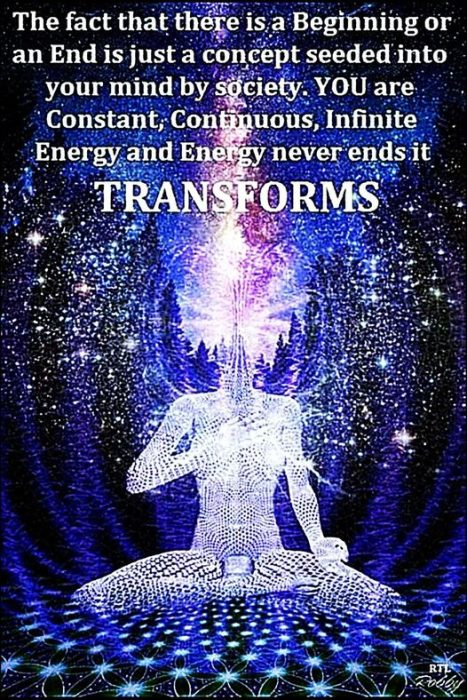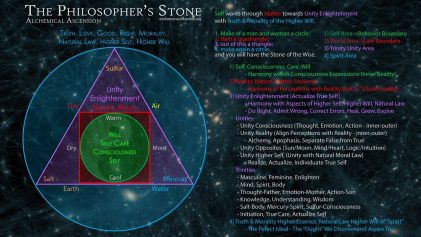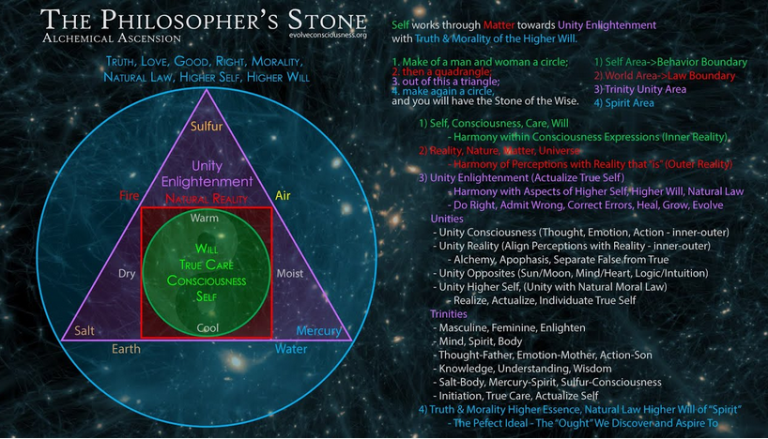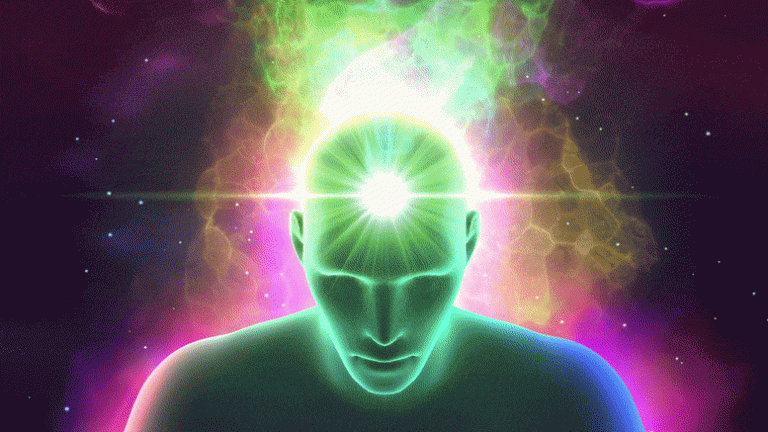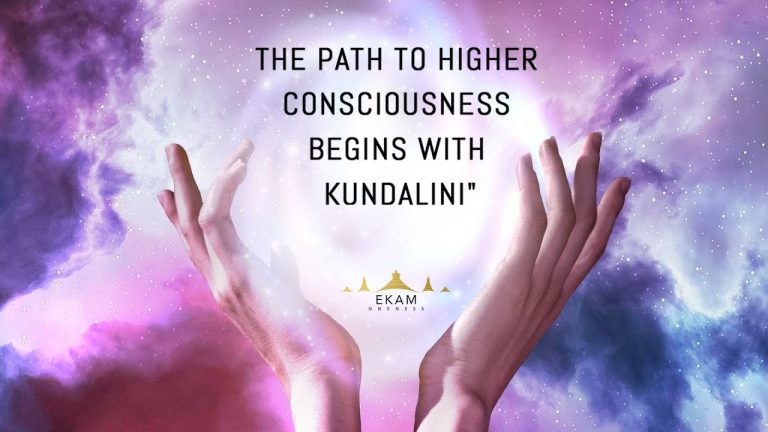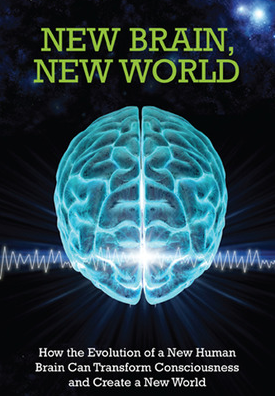
What is Faculty X? It is, as Wilson says, our ability to grasp the reality of “other times and places.” It is in fact our evolutionary destiny—according to Wilson—to cultivate Faculty X which is at once the “creative faculty and the occult faculty.” This last tells us that, as would make sense in a book about the occult. To understand The Philosopher’s Stone more fully, we must first state the exact nature of what Wilson calls ‘relationality’, and its key component ‘intentionality’.
These extraordinary powers are not merely increased processes of mentation, but also an ability to see into the past, to intuit certain dangers before they happen and furthermore to move the moon in its own orbit.
What we are really seeing here is Wilson’s notion of the Lifeforce, of Henri Bergson’s élan vital, further infiltrating life not only into matter but through mankind’s evolutionary leap, and becoming one with the act of intentionality. Wilson has said that the “first man to learn the secret of the control of consciousness will be the first true man, wholly in possession of the new dimension of freedom” (1972: p. 150).
Gilbert Austin and Howard Lester of The Philosopher’s Stone have the freedom from both space and time in the sense that the material environment is manipulable to their will, and even conferring longevity in the case of Lester. Indeed, this was the famous definition of magic by Aleister Crowley, who defined magic as “the Art and Science of causing change to occur in accordance with Will”.
In The Mind Parasites occult powers are primarily expressed through psychokinesis or telepathy, and in The Philosopher’s Stone it occurs in the form of ‘time-vision’, or psychometry. In other words, consciousness for Wilson is not necessarily bound to the material world, but instead he implies that it emanates from elsewhere and yet paradoxically inside of us, at the same time animating the environment.
Of course, Wilson quite often refers to consciousness as an invasion of matter—and that it is mankind’s job to increase consciousness, and therefore, freedom into the more limited world of matter.
It is interesting to note that, in his later novel, The God of the Labyrinth (1970), there is discussion of idealism, where the character, Korner, a Reichian psychotherapist, declares that idealists “believe that such things as life, thought, ideas, can exist apart from matter”, however, Sorme—Colin Wilson’s alter-ego—believes that “minds and mental processes are inseparably linked with matter; but [he] still believe[s] that life has somehow entered matter from outside, not that it is an emanation of matter, as fire is an emanation of coal” (2013: p. 228). The idea of life being somehow an emanation of matter, as an evolutionary force in itself, is Wilson’s essential position regarding the Lifeforce—that it is indistinguishable from the force of increasing complexity and freedom inherent—and most manifest—in mankind.
This quote from Religion and the Rebel, encapsulates Wilson’s anti-reductionist attitude early on in his career. It is worth quoting at length:
“…materialism and all its incarnations—Marxism, logical positivism, and the smirking Betrand Russell type of rationalism—are…deadly. They make imprisonment in time, consciousness and personality—to which human beings are only too prone—seem quite natural and inevitable. And since this way of thought has become the prevalent way in our modem world, the Outsider must raise the banner of a new existentialism, and make war on civilized modes of thought” (1984: p. 192)
From this standpoint, it is made clear that the ‘new existentialism’, in many ways, has as its final goal—albeit it its furthest and most logical conclusion—a mystical, transcendental vision that can be found in occultism.
The occult is most certainly considered, by many, a “war on civilized modes of thought”! Now, in particular interest to us is the mention of the constraints of “time, consciousness and personality”, for these themes are consistently called into question throughout all of Wilson’s work.
And yet, his most forceful attack on these material limitations may be found in The Philosopher’s Stone. Indeed, this novel deals almost exclusively with the nature of time, and particularly time’s relationship with consciousness. In The Mind Parasites, Austin mentions that his colleague, Karel Weisman, considered ‘self-renewal’ to be “[the] most remarkable faculty of mankind” (2005: p.45). Weisman’s prescription for this is cited in his Historical Reflections, in which he states that man “has to learn to relax, or he becomes overwrought and dangerous. He must learn to contact his own deepest levels in order to re-energize his consciousness” (2005: p. 49).
Implicit in the very idea of ‘self-renewal’ is the negentropic [the opposite of entropy, i.e. a tendency to increasing meaning, order and stability] notion that consciousness need not succumb to indifference, passivity and boredom. The Philosopher’s Stone is more concerned with negentropy.
It is, in short, G.K. Chesterton’s ‘absurd good news’, which Wilson describes as an “odd feeling of ‘immortality’ that occurs “outside time”. He continues: “one grasps that he himself is, in some important sense, above time. [One] is experiencing what […] I [call] ‘duo consciousness’, the odd ability to be conscious of two places at once” (2009: p.113).
It is a whole new approach to time, meaning and a new relation to the problem of contingency. And yet in this novel even biological processes can be saved from the “arrow of time”. And even entropy’s role in the aging process itself! Wilson has clearly adopted this idea of immortality from the history of alchemy, and has approached it through the implications of his own ‘new existentialism’.
For consciousness—particularly increased consciousness—is akin to the philosopher’s stone, for whether or not it pertains to more life in the physical sense, it nevertheless—by its very implication—means that we live our lives more fully in our awareness of existence and of its possibilities. Indeed, reality and its acquisition through consciousness is an obsession that runs throughout existentialism; it’s the point from which existentialism and phenomenology proceeds.
To know truth behind our own existence, and to apprehend some sense of direction or purpose, is fundamentally the goal to which Wilson drove himself towards his whole life.
Once these have been grasped, we can fully understand the mechanism behind ‘Faculty X’, and thus the bridge between the ‘new existentialism’ and the occult. The act of intentionality alone is not, according to Wilson, in itself the defining quality of consciousness, but it must instead have a ‘weblike’ quality, whereby consciousness perceives everything not as an object in and of itself, in a simple dualism of seer and seen, but as a part of a pattern—the thing or object must exist within a meaningful context.
Wilson summarizes this issue of context as a key to expanding consciousness: for “to see a thing truly is to see it in the widest possible field of relations” (1985: p. 59). He argues, furthermore, that mystical visions are by definition an act of `relationality’, in which larger areas of interconnected ‘facts’ are suddenly apprehended not as mere concepts, but as a total reality in themselves.
And the reason for the ineffability of most mystical experiences is due to “the meaning content of weblike consciousness [baffling] expression”, this may be because it is “already known to the limited everyday consciousness — but known conceptually , not perceptually.
Wilsons says “a hundred times a day to see the familiar as strange. We are fighting a war, a war against matter and automatism. So far we have fought dimly and instinctively; it is now time to drag the war into the open, and fight with all the resources of the mind” (2013 [1]: p. 106)
To ‘see the familiar’ as strange, and to see the world ‘with new eyes all the time’ is perhaps the edict of occult philosophy. It is a concerted effort not merely at exercising apophenia—of patterns in randomness—but in an attempt to expand consciousness so it can process larger portions of reality, and therefore exponentially increase conscious freedom.
Again, Lester describes his own mystical insight as an overwhelming sense of a “vast, beautiful, objective universe, this universe whose chief miracle is that it exists as well as myself. It is no dream, but a great garden in which life is trying to obtain a foothold” (2013 [I): pp. 203-204).
Lester transcends the problem stated in the limitations of `civilized thought’, that is “imprisonment in time, consciousness and personality”, and this is precisely what the banner of the ‘new existentialism’ was raised against in as early as 1957.
The bridge between the ‘new existentialism’ and occultism is crossed, through Wilson’s science fiction. And oddly it is through the allegory of a Lovecraftian horror—out of which Wilson’s protagonists emerge triumphant—that Wilson set up his science-fictional explorers by colonizing the material world by transcending its limitations.
That is, as the Romantics were attempting to ‘go faster than sound’, Wilson’s science fictional protagonists are experiments in exceeding the speed of light in a flash of Faculty X. ..
The strange alchemy of existentialism and the occult is essentially the unification of theory and practice. The ‘new existentialism’, unlike the ‘old’ existentialism, is focused on an active interpretation of consciousness.
Today I’m going to talk about Faculty X which, as you know, is a central theme, if not the central theme, in Colin Wilson’s work. What is Faculty X? It is, as Wilson says, our ability to grasp the reality of “other times and places.”
Not merely to remember a past time or place, or to pine nostalgically for it. But to grasp its reality. It is, Wilson says, “an intenser and more powerful form of consciousness,” which is in essence, our “direct sense of reality.” It puts us in touch with “meanings, far bigger than ourselves,” and makes “all personal preoccupations seem trivial.” It is, at heart, our “latent power” to “reach beyond the present” and ultimately to transcend time.
Now of course, Faculty X is the source of the “absurd good news” that kicks us out of the “triviality of everydayness” and pushes us past our “indifference threshold.”
It solves the riddle of the “paradoxical nature of freedom” and is the aim and stimulant of our “evolutionary appetite.”
Wilson expands the scope of Faculty X to include paranormal abilities, like bi-location, the strange power of not only grasping the reality of other times and places, but of actually being in “two places at once.” He tells how literary figures such as August Strindberg and John Cowper Powys—both of whom claimed to have magical powers—”appeared” before friends who lived miles away while at the same time their physical body remained elsewhere.
It happened to Goethe too and to Yeats. Talk about other times and places! Wilson would later include psychic abilities like psychometry, which also deals with obtaining direct knowledge of the past, and precognition, which deals with obtaining similar knowledge of the future, under the rubric of Faculty X. And other glimpses of other times and places, given to occultists like Madame Blavatsky and Rudolf Steiner by way of the Akashic Record, which include the occult history and future of the entire cosmos, can be seen as variants on this latent appetite we have for wider horizons of that mysteriously elusive but ever present reality we are for some odd reason out of touch with.
The poet W. B. Yeats was a member of the order of the Golden Dawn, one of the first and best known occult societies of late 19th century England. In his autobiography Yeats describes an incident that occurred on a walk taken by one of the other Golden Dawn members and MacGregor Mathers, one of the order’s founders. took at those sheep,’ said Mathers. ‘I am going to imagine myself a ram.’ The sheep immediately began to run after him.
Mathers could also use his strange powers on people, just as the Swedish playwright August Strindberg believed he himself could. Once when Strindberg was eating alone in a restaurant, he recognized two friends among some drunk people at another table. To his dismay, one of them began to approach him. Strindberg fixed his eyes on the man. At this, the friend looked bewildered and returned to his table apparently convinced that Strindberg was a stranger.
Strindberg once attempted to practice black magic, and he believed that his later suffering and bad luck was a result of this dabbling with evil forces. It was when he was separated from his second wife. He wanted desperately to bring about a reconciliation, and had to think of a way of seeing her. He decided to use his telepathic powers to make his daughter just sick enough to require a visit from him. Using a photograph of the girl, he tried to bring about her illness. When the two children of his first marriage got sick a short time later, he felt that he was responsible, and that his use of the evil eye had misfired. Strindberg dates his misfortunes from then on.
Coming to terms with the powerful reminder that the mystery of human awakening to divine love is rich , so rich that our understanding of it — not to speak of our existential living of it can never be exhausted .
Coming to terms with the powerful reminder that the mystery of human awakening to divine love is rich , so rich that our understanding of it — not to speak of our existential living of it can never be exhausted .
